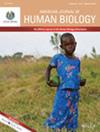Intrasexual Selection for Upper Limb Length in Homo sapiens
Abstract
Objectives
Sexual selection via contest competition has equipped countless organisms with weaponry in their appendages to overpower their opponents. Here, we tested (1) whether greater upper limb length—measured as span controlling for biacromial width—confers an advantage in contest competition among adult humans, (2) several possible means by which upper limb length might increase success in intrasexual contest competition, and (3) whether, consistent with male–male contest competition creating stronger selection pressures than female–female contest competition, male Homo sapiens have greater upper limb length.
Methods
We collected fight statistics and facial and body photographs from professional combatants (N = 715) in the Ultimate Fighting Championship (UFC; Study 1). Sexual dimorphism in upper limb length was then examined via diverse and demographically representative samples from four studies (total N = 6915), from Croatian adolescents and older Singaporean adults to United States Army personnel born across all major world regions (Studies 2a–2d).
Results
First, we found that greater upper limb length is associated with increased success in intrasexual contest competition, an effect driven by both the capacity to grapple opponents to submission and to knock opponents unconscious (Study 1). Second, we found unequivocal, cross-cultural evidence of unique sexual dimorphism in upper limb length after controlling for allometry: across four studies, men exhibited longer upper limbs than women (Studies 2a–2d).
Conclusion
Upper limb length may have been shaped by intrasexual selection, with implications across the biological, anthropological, and psychological sciences.


 求助内容:
求助内容: 应助结果提醒方式:
应助结果提醒方式:


